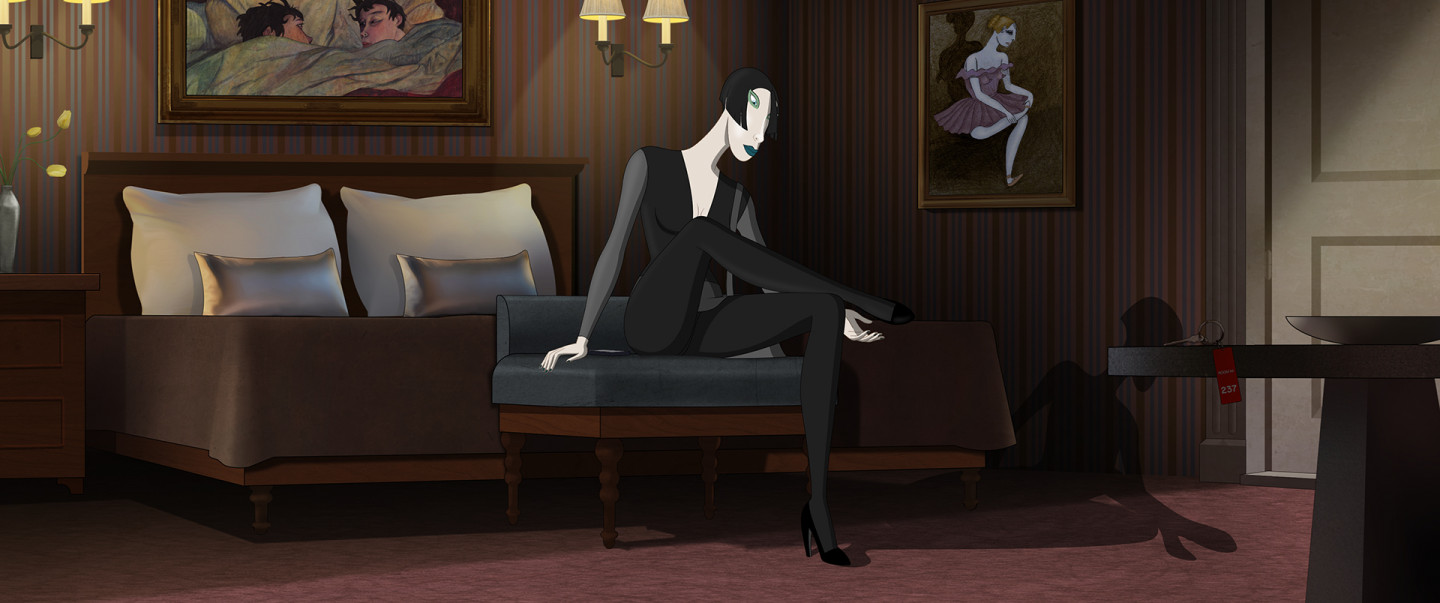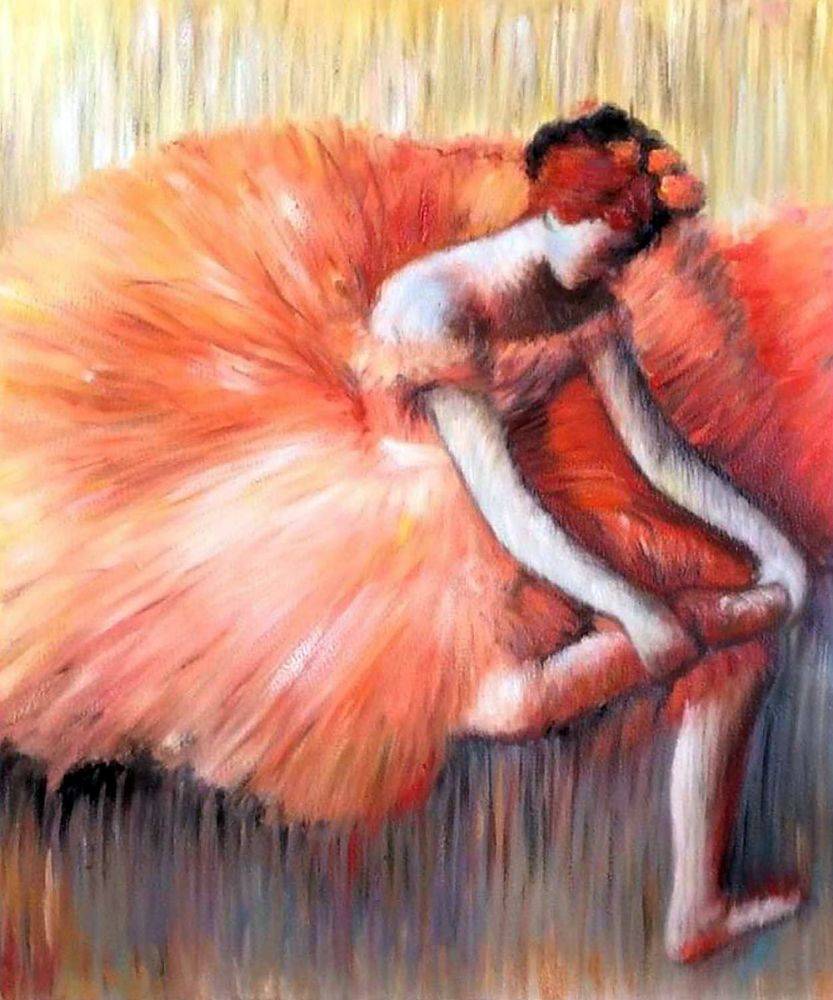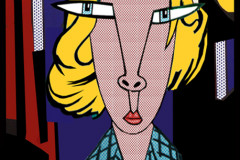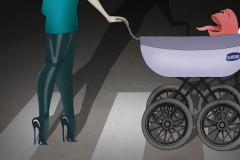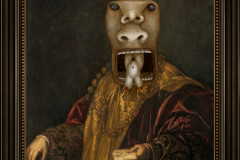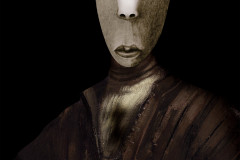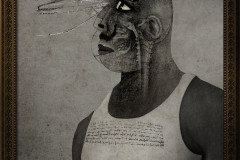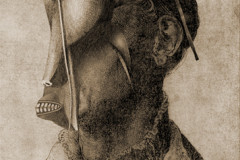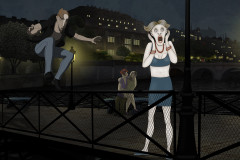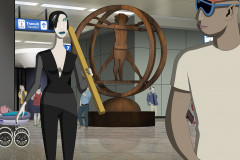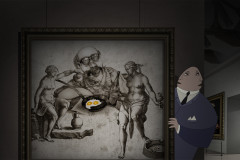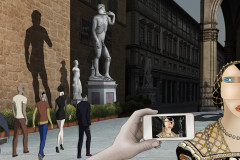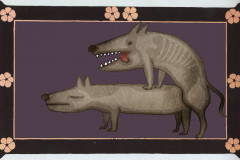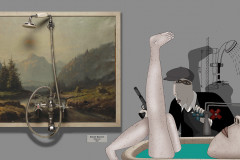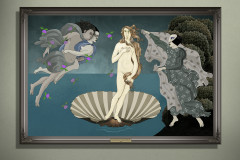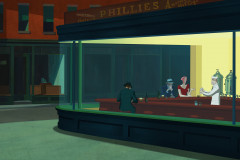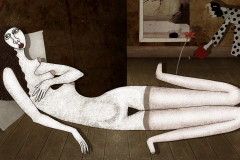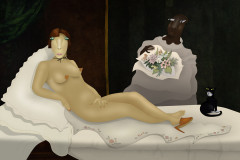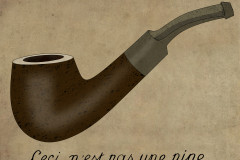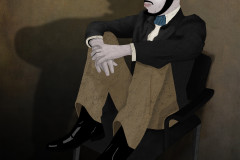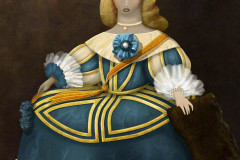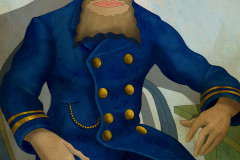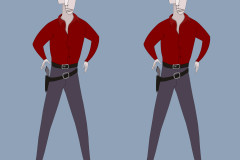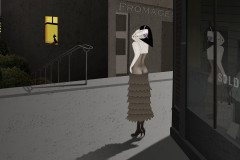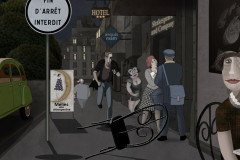Degas, Edgar (1834-1917): Balettcipőjét igazító balerina, 1896 k. (pasztell), magángyűjtemény. A pillanat rögzítését célul tűző impresszionisták közül Degas volt az, akit leginkább a mozgás, ill. az egyes mozdulatok érdekeltek. Képei (és később szobrai) témáit a balettermekben és a lóversenypályákon kereste. Véletlenszerű, egyszerű gesztusok – amelyekben sokszor mégis van valamilyen klasszikus komponáltság. Ilyen mozdulat a cipőjét igazító balerina póza is – ismerős esetleg valahonnan? Már azon túl, hogy láthattad a filmben Mimi párizsi hotelszobájának falán...
„Miért fest táncosnőket?”- kérdezte egy amerikai gyűjtő Degas-t az 1890-es években. „Mert csak náluk találom meg az ókori görögök gesztusait…” - válaszolta a mester, aki modernsége ellenére rajongott a klasszikus művészetért. Lehet, hogy véletlen, de ez a pasztellkép is egy görög szobor mozdulatát idézi: a hellenisztikus művészet Tövishúzó fiújáét (és ami biztosan nem véletlen: ez a szobor is előkerül a Ruben Brandt film által idézett műalkotások között). A lány jobb lábát a bal térdére helyezve igazít a cipőjén – személyes mozdulat, amelyet nem a külvilágnak szánva, de mégis harmonikusan, elmélyült figyelemmel végez a balerina. Táncos képzettségére csak a kissé természetellenesen kifordított bal lábfej utal, mintha csak a klasszikus első pozícióban maradt volna ez a lába, amikor felemelte a másikat. Próbáld ki, nem valami kényelmes!
Edgar Degas (1834–1917): Ballerina Adjusting Her Slipper, c. 1896 (pastel), private collection
Among the Impressionists—who aimed above all to capture fleeting moments—Degas stood out for his fascination with movement and the gestures of the human body. His favorite subjects were dancers and racehorses, and he frequently sought inspiration in ballet studios and racetracks. His works often depict seemingly casual, everyday motions, yet they are imbued with a quiet compositional elegance. One such gesture is the pose of this ballerina adjusting her shoe—does it look familiar? Beyond appearing in Ruben Brandt, Collector, on the wall of Mimi’s Paris hotel room?
“Why do you paint dancers?” an American collector once asked Degas in the 1890s. “Because only with them do I find the gestures of the ancient Greeks,” the artist replied. Though thoroughly modern in approach, Degas revered classical art. Coincidentally or not, the pose of this pastel ballerina echoes a famous sculpture from Hellenistic antiquity: The Spinario (Boy with Thorn)—which also makes an appearance in the Ruben Brandt film. The dancer places her right foot on her left knee as she adjusts her slipper—a personal, intimate action not meant for an audience, yet carried out with calm grace and concentration. Only the slightly unnatural outward turn of her left foot hints at her training, as if her foot remained frozen in classical first position while she lifted the other leg. Try it yourself—it's not exactly comfortable!






